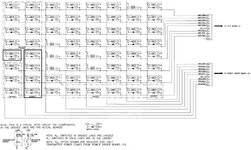I'm struggling to understand the placement of the diode on a micro switch, it appears the normal way to wire it is to have the green ground wire on the NO leg, Switch pulse on the NC leg, then a diode bridging NC and Common with the banded side nearest the Common.
I have tried googling for the answer but I can't find an explanation that I can understand, I don't like doing things without knowing why, even if it is correct.
Furthermore, how do you wire a micro switch with 4 legs on?
Thanks
I have tried googling for the answer but I can't find an explanation that I can understand, I don't like doing things without knowing why, even if it is correct.
Furthermore, how do you wire a micro switch with 4 legs on?
Thanks


